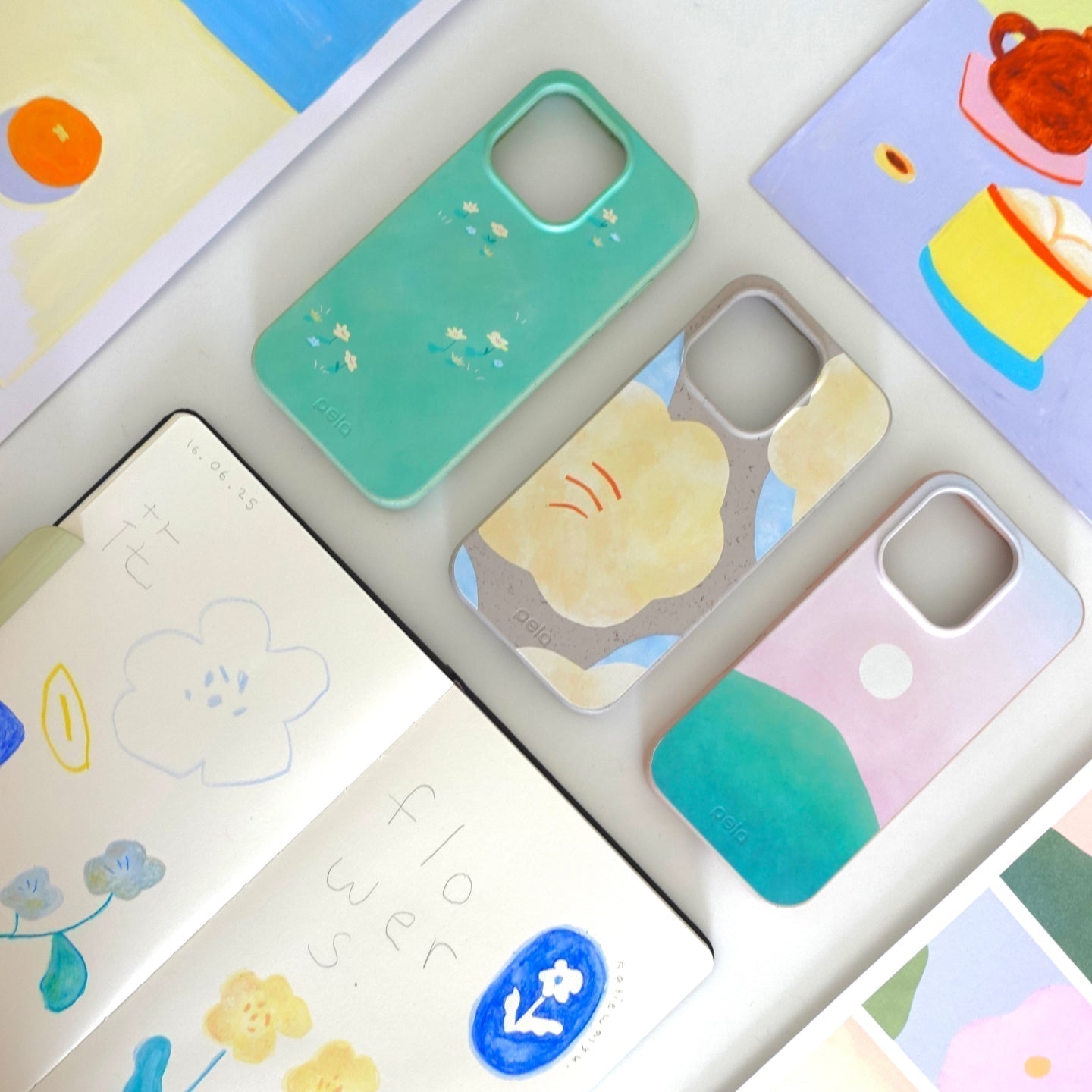Did you know, on average, indoor air pollution is 2-5 times worse than outdoor air quality? Yep according to the EPA our homes can be pretty toxic.
It's been found that deodorants, soap, perfume, hairspray, and household cleaners actually release harmful types of pollutions that match the level pollutants emitted by motor vehicles on the road today.
A study published in the journal Science found that petroleum-based cleaners which can be found in numerous household beauty and cleaning products emit air pollution in the form of V.O.C.s which are volatile organic compounds the same of which are emitted by cars.

V.O.C.s are one of the major building blocks in creating smog. Isn't it crazy to think that what's in your bathroom cabinet could be responsible for creating smog!?
Smog is normally associated with cars, and several states require smog checks which have forced automakers to invest in V.O.C./emission reducing tech for vehicles.
And, while our cars have gotten cleaner, scientists have been able to identify another problem... our household products.
Smog happens when V.O.C.s interact with other particles in the air and are responsible for a litany of problems like asthma, trouble breathing, heart attacks, strokes, and lung cancer.
What Causes Indoor Air Pollution?
This is just a few of the common things that might be causing indoor air pollution in your home.
Building materials: Do you know how your home was constructed? Some of the most common pollutants in homes are asbestos, lead, and formaldehyde.
Furnishings: What I think is even scarier is that you can buy toxic products right off the shelf like mattresses, couches, and carpets which might have flame retardants and need an off-gassing period before they're safe.
Household products: Things like beauty products, cleaning products, lacquers, pesticides, paints, and disinfectants are just a few of the purchases that bring toxic substances into your home which may release dangerous airborne chemicals.
Smoke: I think most of us now know, that tobacco smoke isn't great for our health. One in nine people that die from a tobacco-related disease aren't even smokers!
Outdoor-indoor allergens: This are outdoor allergens that become concentrated inside and the can really affect people with allergies and asthma. This can come from a wide range of things like rodent droppings, dust mites, pollen, mold, pet dander, etc.

Should I be super alarmed!?
No, I wouldn't be super alarmed unless you or someone in your family suffers from asthma or severe allergies. We're never going to be 100% free of pollutants in our homes (or world), but there are a few simple changes you can make to reduce indoor air exposure.
What can I do?
1. Air fresheners have GOT to go:
If you have air fresheners plugged into your walls, air freshener sprays anything that makes the air "smell better" it's got to go.
Let's take Febreze as an example. What is Febreze?
According to proctor and gamble, it doesn't remove odor molecules. Instead, it traps them inside of a chemical shield to mask the bad scent with a fake chemical smell. Um - what?
P&G claims it uses only four ingredients: water, alcohol, odor eliminator derived from corn, fragrance, but the ewg found 89!
Here are the findings:
"University of Washington study found that U.S. air fresheners released an average of 18 chemicals into the air. On average, one in five of these chemicals were hazardous substances highlighted in federal and some state pollution standards.
When EWG conducted more sensitive testing of the air freshener Febreze Air Effects as part of a 2009 study of cleaning supplies used in California schools, we detected a total of 89 airborne contaminants, including acetaldehyde, a likely human carcinogen according to the EPA.
Some of those chemicals include:
- BHT — a known neurotoxin, a hormone disruptor, immune system toxin, and irritant to the skin, eyes, and lungs.
- Propylene Glycol — also a known carcinogen, propylene glycol is toxic to the immune system, is linked to allergies, accumulates in the body and irritates the skin, eyes, and lungs
- Acetaldehyde — a known carcinogen, that has reproductive and development effects immune system toxin, and irritant to the skin, eyes, and lungs.
- Fragrance — This is one of the four disclosed ingredients. However, on its own, it can contain up to 400 ingredients, most of which 95% are petrochemicals. Exposure to fragrances can damage the central nervous system and cause depression, hyperactivity, irritability, inability to cope, behavioral damages, headaches, dizziness, rashes, hyper-pigmentation, vomiting, coughing, and skin irritation. the most common chemicals in fragrances are ethanol, benzaldehyde, benzyl acetate, a-pinene, acetone, benzyl alcohol, ethyl acetate, linalook, a-terpinene, methylene chloride, and a-terpineol. Most of these ingredients were found in Febreze.
- 1,3-Dichloro-2-propanol — known carcinogen"

Anytime you see the word "Fragrance" you probably shouldn't pick up that product. Fragrance is a catch-all word. Fragrance is considered an industry/trade secret so companies can kind of hide a whole bunch of toxic chemicals under the term, but you'll never know about it.
You can easily make DIY cleaners and DIY Febreze for pennies, and the best part is it takes less than one minute. LESS THAN ONE MINUTE. Check out a list of diy, zero waste cleaners.
2. Get some house plants:
Studies conducted by NASA have identified 50 houseplants that can help remove pollutants from your home. They conducted a study with the Associated Landscape Contractors of America for two years and found that houseplants, when placed in a sealed chamber with pollutants, could actually remove those pollutants from the chamber!
And, let's be honest... house plant are just awesome. And, you can show off your plant status with your phone case!
Here are 7 plants that are A. Instagram worthy and B. will help keep your home clear and clean!
- Areca Palm (Chrysalidocarpus lutescens)
- Bamboo palm (Chamaedorea seifrizii)
- Rubber Plant (Ficus robusta)
- Dracaena “Janet Craig” (Dracaena deremensis)
- Philodendron (Philodendron sp.)
- Dwarf Date Palm (Phoenix roebelenii)
- Peace Lily (Spathiphyllum "Mauna Loa")
3. Open the windows:
Get in the habit of airing out your home! Homes are very tightly sealed these days which is great from an efficiency point of view i.e. saving energy, but that means it's difficult for your home to self-ventilate.
Make sure that you're changing your filters regularly and that you're opening your windows to allow air to move freely.
4. Examine your beauty routine:
Try to opt for organic beauty products. Not only will these be better for your skin and body, they'll also be better for the air that you breathe.
A study found that forty percent of the chemicals added to consumer products wind up in the air!
A lot of your beauty products might not even be necessary or at least not necessary as often.
My first tip is to whittle your beauty products down to a capsule. If you were going on vacation what would be the products you HAD to take with you. Then start only using those products and implement a one-for-one rule.
With this rule, you can only buy another eyeshadow after the one you're currently using runs out. This prevents impulse purchases, and will save you money!
Check to see how much of the product you should be using. Are you using more than you should? And are you using it more often than you should? Instead of applying lotion every night maybe you really only need to apply it once every other night or every other, other night.
A benefit to playing around with frequency and use is that you might accidentally solve your problem!
After I learned it's not super healthy to shower every day, I started showing every two days. I stopped stripping my body of the oils that it naturally produces and wound up not even needing lotion except for the occasional super wintery day.

5. Go for organic:
When it comes to making large purchases especially those with off-gassing periods like mattresses, try to opt for organic. Most non-mattresses don't recommend that you sleep on them for the first three days.
After that, it can take three years for them to finish off-gassing!




